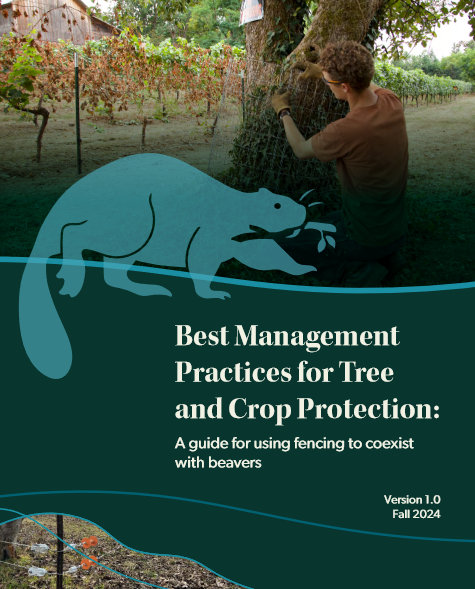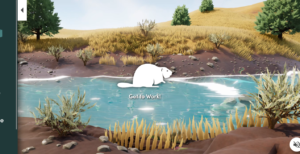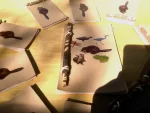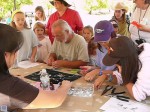Sure the NYT does a great article on beavers that people will be sending to me for years but the SF gate could not be outdone so the published an article the same day by their friendly intern. Of course it had a photo of an otter originally but the pulled that eventually. Beaver. Otter. What’s the diff?
Why this underappreciated rodent is one of California’s best chances to fight climate change
They’re stocky, furry and usually a bit damp, and they’ve been underappreciated for decades. But not anymore. Meet one of California’s best climate-change fighting tools: the beaver.
Lauded as some of nature’s most effective engineers, a motivated group of beavers can divert rivers and streams with their dams of sticks and mud and, in doing so, keep the land they occupy moist, helping fight the ongoing drought. That moisture can also play a key role in slowing the state’s virulent wildfire season — flames can’t burn wet sticks. Smokey Bear? Think Smokey Beaver instead.
This year, the state has begun harnessing the beaver’s potential, pumping over a million dollars into restoring these industrious rodents in each of the next two years.
“This new beaver restoration program is not just figuratively but literally a watershed moment for Californians to recognize beaver as a climate change and nature-based solution partner,” said Brock Dolman, co-director of the Water Institute at the Occidental Arts and Ecology Center in Sonoma.
Dolman and Water Institute Co-Director Kate Lundquist have been a part of what they call the “beaver believer” community for decades, advocating for beaver restoration in the state. The money — which amounts to $1.67 million in the 2022-23 fiscal year and $1.44 million in the 2023-24 fiscal year — will fund jobs for five new environmental scientists who will work with the California Department of Fish and Wildlife to revise outdated beaver policies and prioritize beaver restoration projects.
So how exactly does this group of rodents help solve some of California’s drought and wildfire problems? It all starts at home.
Beavers live in dams they construct from tree branches and mud surrounded by water, which create a hard barrier that’s difficult for predators to penetrate. They have underwater entrances to these lodges, which are usually home to two monogamous adult beavers and their offspring. These barriers aren’t just homes. The blockade spreads water from small streams into vast wetland areas.
Oh and just between us girls, BEAVERS DON’T LIVE IN DAMS.
These wetland areas allow water to slowly seep into the soil so when droughts happen, enough water is stored in the ground to keep areas green, explained Emily Fairfax, assistant professor of environmental science and resource management at California State University Channel Islands. They help support all kinds of wildlife from salmon and trout to lush plant life.
The rodents are also constantly chewing vegetation to create their lodges, keeping greenery “a little bit less old, less stagnant, and shorter,” Fairfax said. Taken together, the beavers are essentially building firebreaks before a fire ignites: “It’s wetland and wet plants and not a bunch of big old trees. And that’s hard to burn,” she said.
Well okay, if you’re going to talk nice about beavers I can forgive the otter. Just as long as there isn’t another egregious outburst that I can’t ignore any time soon. I know the gate would rather eat it’s own arm off than say nice things about beavers so this is something, right?
Beavers are native to many parts of Northern California, including the Bay Area, but not everyone recognizes their ecological value. Once prized for their meat and furs, they were nearly hunted to extinction by European colonizers from the late 1700s to the mid 1800s, according to Lundquist and Dolman’s research. By the early 1900s, there were just 1,000 estimated beavers left in California, they said
A reprieve for the beavers came in 1911, when the California Division of Fish and Game, now the Department of Fish and Wildlife, passed laws protecting remaining beavers from being hunted. But, it was only temporary, and the law was revised to allow landowners to kill “nuisance” beavers. Their dams, while impressive, often cause damage to farmland and can pose a flood risk.
Depredation is still a threat to California beavers today. Before landowners can kill beavers, they must apply for a permit through the Department of Fish and Wildlife. The department issued 148 of these permits in 2021. Just because a permit was issued doesn’t mean it was used to kill a beaver, though. Alternatives can be limited. Relocating beavers is illegal in California, according to Chad Dibble, deputy director of the Department of Fish and Wildlife.
In 2007, the city of Martinez nearly exterminated its beavers after its dams were reported to create a flooding hazard. Because the beavers could not legally be moved, killing them appeared to be the only option. Public outcry was so great that the beavers were ultimately allowed to stay.
Don’t you even. Hey did Rick Lanman have something to do with that research? I forget. And oh year MARTINEZ KEPT BEAVERS BY INSTALLING A FLOW DEVICE. Jesus Christ on a ritz cracker. To drop us an honorary mention without actually saying the point makes me homicidal. And did she actually glance at those papers? Didn’t she notice that their names weren’t at the top?
“There’s that phrase that a crisis is a terrible thing to waste, and our sense is that a living beaver’s life is a terrible thing to waste,” Dolman said.
It’s hard to say how many beavers inhabit California today, according to Dolman. He explained there currently is no monitoring of beaver populations at the state level. But, they could be doing better.
“We are absolutely hemorrhaging beavers out of the Sacramento River Delta and out of the Sierra Nevada and it should not be that high,” Fairfax said. “Especially if we are also having these really intense fires and droughts in those regions.”
Many in the “beaver believer” community hope the state’s efforts at restoration will create a new age for the animals in the Bay Area and California. The Department of Fish and Wildlife has already spent millions implementing beaver restoration programs, including creating beaver dam analogs that mimic the form and benefits of natural beaver dams, according to Dibble.
But he explained the department is now going to take a “more holistic and proactive approach towards supporting beavers,” including prioritizing beaver restoration projects, fostering better partnerships with local communities, indigenous tribes and landowners and updating and adopting policies for better beaver management throughout the state.
Lundquist added the new program could identify some places for potential pilot relocation projects, taking beavers from where they aren’t wanted and placing them where they’re needed.
Dolman is optimistic the department’s efforts will have a positive impact on beaver populations in California.
“The beaver glass is more than half full with benefits and half empty with problems, and we have affordable legal code and strategies to address all of those problems,” he said.
That’s exactly how I feel about this article. It’s kinda nice that it got written at all and it says nice things about beavers. But it’s kinds annoying to say that the junior author of the papers did the research, that martinez is a bed time story, that beavers live in the dam and run a photo of an otter.
I guess that’s life in the beaver city.



 “They’re very controversial still,” said Mr. Smith, whose father died in 2014. “But it’s getting better. People are starting to wake up.”
“They’re very controversial still,” said Mr. Smith, whose father died in 2014. “But it’s getting better. People are starting to wake up.” Beavers flood roads, fields, timber forests and other areas that people want dry. They fell trees without a thought as to whether humans would prefer them standing. In response to complaints, the federal government killed almost 25,000 beavers last year.
Beavers flood roads, fields, timber forests and other areas that people want dry. They fell trees without a thought as to whether humans would prefer them standing. In response to complaints, the federal government killed almost 25,000 beavers last year. “We need to get beavers back to work,” Wade Crowfoot, California’s secretary of natural resources,
“We need to get beavers back to work,” Wade Crowfoot, California’s secretary of natural resources,  Mr. Smith’s father got so angry at beavers in part because the sides of their dams would fail during the rush of the spring snow melt, sending damaging sediment onto his hayfields. But the younger Mr. Smith decided to try a different approach to cattle management, moving them around his land and letting them spend less time around the creeks. That allowed shrubs and trees to grow in along the banks, making the whole area more stable. Eventually, if the beaver dams did give way, they would do so at the center, and the surge of water would stay in the channel.
Mr. Smith’s father got so angry at beavers in part because the sides of their dams would fail during the rush of the spring snow melt, sending damaging sediment onto his hayfields. But the younger Mr. Smith decided to try a different approach to cattle management, moving them around his land and letting them spend less time around the creeks. That allowed shrubs and trees to grow in along the banks, making the whole area more stable. Eventually, if the beaver dams did give way, they would do so at the center, and the surge of water would stay in the channel.
 Quebec’s
Quebec’s  At the end of the project, Parks Canada will have restored 133,000 square metres (1.4 million square feet) in surface area and will have connected six streams whose banks will have been rehabilitated, facilitating the passage of fish and amphibians.
At the end of the project, Parks Canada will have restored 133,000 square metres (1.4 million square feet) in surface area and will have connected six streams whose banks will have been rehabilitated, facilitating the passage of fish and amphibians.



































